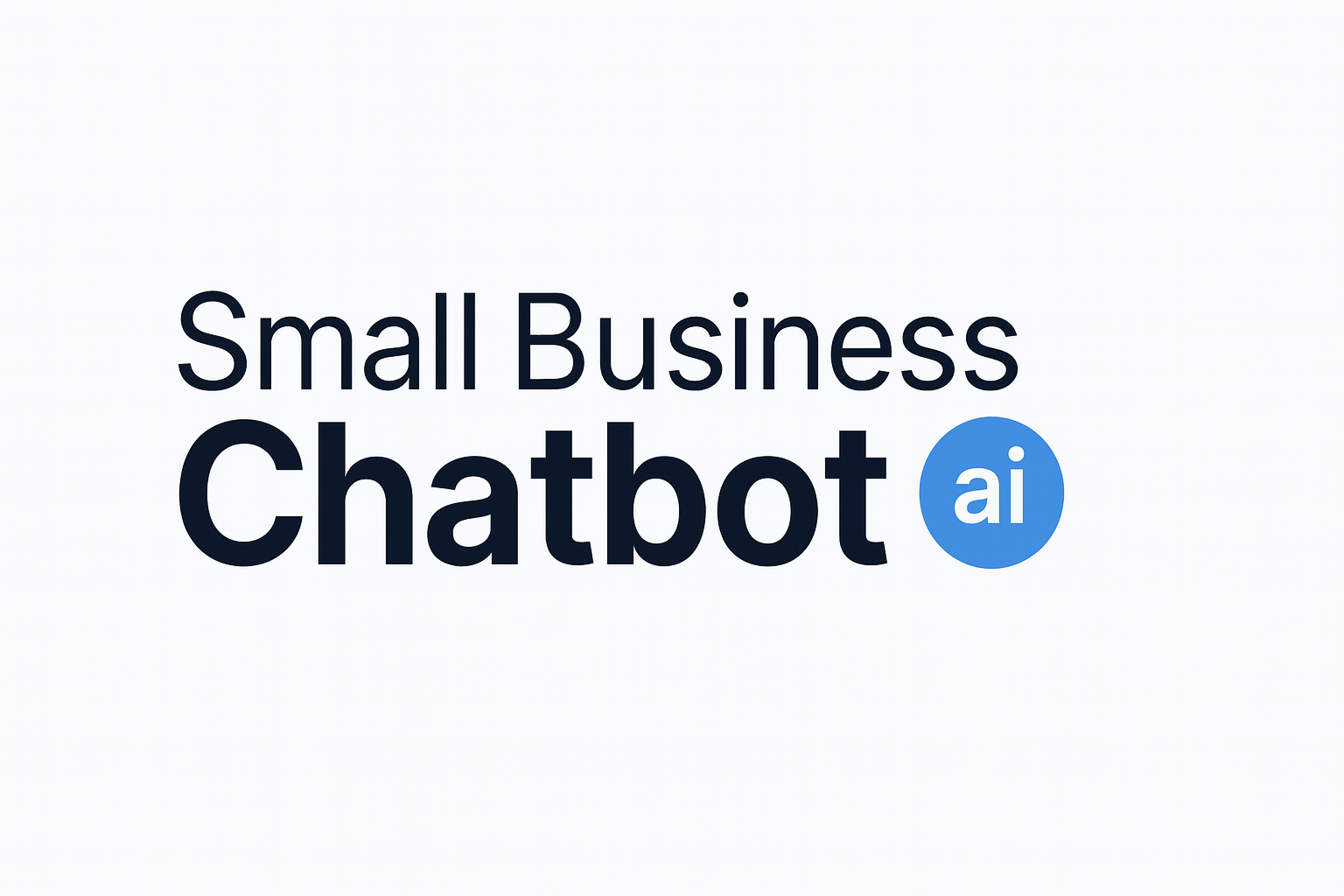A practical buyer's guide for home services, wellness, professional services, field support, and local firms that depend on fast, reliable communication.
AI chatbots can answer common questions, book appointments, collect leads, and triage issues so your team focuses on high‑value work. The challenge is picking a platform that actually fits how your services run. Use this guide to compare features, avoid hidden costs, and test vendors with confidence.
What to compare — at a glance
1) Core job-to-be-done
- Lead capture and qualification
- Scheduling and reminders
- Service request triage and routing
- After-hours coverage
2) Accuracy and controls
- Understands messy questions (NLP quality)
- Uses your knowledge safely (documents, FAQs)
- Has guardrails and fallbacks (no “hallucinations”)
3) Operations fit
- Calendar and CRM integration
- Dispatch/field workflows
- Live-agent handoff without losing context
4) Visibility and ROI
- Clear analytics (leads, bookings, deflection)
- Cost controls and usage alerts
- Easy content updates by your team
Essential features for service-based work
Scheduling and dispatch
- Two-way calendar sync and real‑time availability windows.
- Rules for service areas, travel buffers, crew assignments, and recurring jobs.
- Automatic confirmations, reminders, and reschedule links.
Lead capture and qualification
- Smart forms that ask follow‑ups (issue type, urgency, location, budget).
- Spam protection, duplicate detection, and consent capture.
- Instant routing to the right queue or staff inbox.
Knowledge and FAQs
- Searches your policies, price ranges, and service notes before answering.
- Versioned content with approvals so answers stay accurate.
- “I don’t know yet” fallback that offers to escalate or collect details.
Natural language understanding
- Handles typos, slang, and multi‑step questions.
- Understands entities common to services: address, date, time, equipment, symptoms.
- Supports multiple languages as needed by your market.
Channels you actually use
- Website widget, SMS, Facebook/Instagram DMs, Google Business Messages, and email.
- Optional voice IVR or voice AI for complex issues.
Accessibility and trust
- Keyboard navigation, readable contrast, and screen‑reader labels.
- Transparent data use and an easy opt‑out for marketing communications.
Integration checklist
Pick a chatbot that plugs into the systems you already rely on. See how integrations are handled and which are native vs. custom work.
See popular connections on our integrations page.
Conversation quality and control
Guardrails that prevent off‑brand answers
- Answer only from approved content (documents, website, price ranges).
- Block risky topics and require human approval for certain responses.
- Keep a traceable log of sources used in answers.
Tone of voice
- Friendly, plain language with optional formality settings.
- Auto‑detects frustrated users and switches to escalation options.
Fallbacks that respect time
- Offer to book a call, collect details, or hand off to a human after two failed tries.
- Never “guess” at medical, legal, safety, or compliance questions.
Handoff, escalation, and compliance
- Seamless transfer to live chat, phone, or email with the full transcript.
- Role‑based routing (sales, dispatch, warranty, field tech).
- Consent capture and audit trail for messages; respect opt‑out requests.
- Data retention settings and clear data ownership in your contract.
Analytics and ROI you can track
Make sure the dashboard shows the numbers that matter to small teams.
- Leads captured, qualified, and booked
- First‑contact resolution and deflection from phone/email
- Average response time and after‑hours coverage
- Revenue influenced: estimates sent, deposits collected
Simple ROI starter formula
Estimated monthly savings = (deflected inquiries × minutes saved × hourly cost ÷ 60) + (extra bookings × average profit) − (software + implementation).
Research highlight
75% of CX leaders expect 80% of customer interactions to be resolved without human intervention in the next few years (Zendesk, 2024). [1] (zendesk.com)
93% of service professionals at organizations that use AI say it saves them time by handling simple queries and content tasks (Salesforce, 2024). [2] (salesforce.com)
Why it matters: for service businesses, these trends point to practical wins—faster answers, lighter workloads, and more booked jobs after hours.
Demo script and evaluation template
Use this 30‑minute script to compare vendors side‑by‑side. Score each item 1–5 (poor to excellent).
- Opening task (5 min): Ask the bot to book a next‑day appointment within your service area, then reschedule and add notes for the crew. Verify calendar updates.
- Knowledge test (5 min): Upload an FAQ or policy. Ask three questions that require details from the file (e.g., cancellation, price ranges). Check citations.
- Lead capture (5 min): Enter a new lead with a duplicate email. Confirm dedupe, consent tag, and CRM owner assignment.
- Escalation (5 min): Trigger a handoff (e.g., “urgent leak”). Ensure transcript and form data reach the right human queue.
- Analytics (5 min): View reports for deflection, bookings, and response time. Set alerts for usage caps.
- Security & data (5 min): Review data retention, export, and who owns fine‑tuning/knowledge artifacts.
Scoring rubric
- 5 = Works as‑is, no help needed
- 4 = Works with light configuration
- 3 = Works but clunky; needs edits
- 2 = Partial; requires custom work
- 1 = Missing or unreliable
Proof from peers
Look for real outcomes like faster replies and more bookings. See our customer reviews.
Pricing and total cost
Don’t compare plans by monthly price alone—compare by your usage and growth.
- Billing unit: conversations, messages, seats, or contacts (and what counts as each).
- Overages: what happens at caps; automatic pausing vs. auto‑charge.
- Setup: onboarding, migration, custom integrations, or training fees.
- Add‑ons: voice/IVR, extra channels, knowledge connectors, or premium support.
- Data & storage: hosting of files, vector databases, and backups.
- Exit costs: exports of content, training data, and analytics.
Examples by service type
Home services (plumbing/HVAC)
- Collects address, issue, urgency, and photos.
- Checks technician availability, proposes 2–3 time slots.
- Books job and adds notes for parts and access.
Health & wellness (salon/clinic)
- Suggests providers by service and duration.
- Confirms intake forms and reminder preferences.
- Escalates sensitive medical/legal questions to staff.
Professional services (IT/accounting)
- Qualifies issues with guided questions.
- Creates a ticket with the transcript for the technician.
- Offers a callback window or remote session link.
Cleaning & maintenance
- Estimates based on room count, pets, and frequency.
- Handles recurring schedules and secure access notes.
- Automates day‑before reminders and reschedules.
Want a done‑for‑you setup? Small Business Chatbot includes templates for common service workflows.
Frequently asked questions for service-based companies
1) How do I prevent wrong answers?
Require the bot to answer only from your approved content and show sources. Add guardrails so it escalates when unsure.
2) What’s the quickest way to launch?
Start with your top 20 questions, a booking flow, and one channel (website or SMS). Expand to more channels after you see results.
3) Do I need a developer?
Not for basics. Choose a platform with no‑code flows, native integrations, and clear how‑to guides. Reserve custom code for edge cases.
4) How do I measure success?
Track leads captured, bookings, first‑contact resolution, after‑hours coverage, and revenue influenced. Review transcripts weekly to improve answers.
5) Will a chatbot replace my team?
It should reduce repetitive tasks so your staff handles complex work. Plan for smooth handoffs and set expectations with your team.
6) Can it work with my CRM and calendar?
Yes—verify native connectors for your stack and test real‑time sync. See example connections on our integrations page.
7) How do I keep costs predictable?
Pick a plan that matches your usage unit (conversations or messages), set alerts, and review overages and add‑ons before signing.
Take the next step
Ready to compare options with less guesswork? Start with a platform built for local service teams.



